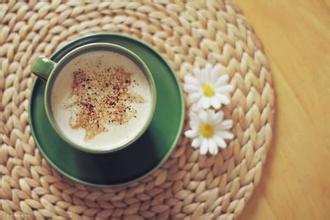Introduction to the composition of coffee beans: the difference between washing and solarization
Washing type:
The fruit that is about to be harvested is put into a flowing trough. After the floating fruit is removed, the skin and flesh are removed by a pulp remover. Then put it in the sink to remove the emerging pulp. After that, move into the fermentation tank, soak for half a day to a day, and then dissolve the gum on the surface of the fermented coffee beans.
After washing with water, drying it for a few days, drying it with a machine, and finally using a sheller to remove the endocarp to become a commercial raw coffee bean. In this way, it will be more beautiful in color and less impurity than dried coffee beans. Colombia, Mexico, Guatemala and other countries use this method for about 70% of their production.
How to choose coffee beans:
Choose fresh coffee beans. When buying, pay attention to whether the color of the beans and the size of the particles are the same. Good coffee beans are shiny and have a strong aroma without being mixed with peculiar smell. No matter what kind of coffee beans, freshness is an important factor affecting the quality. When shopping, grab one or two coffee beans in your mouth and chew them with a crisp sound (indicating that the coffee is not damp) and the fragrance of the teeth and cheeks is the top grade, but it is best to squeeze it with your hands to feel whether it is solid, rather than buying crispy coffee. If the coffee bean has lost its fragrance or smells stale, it means that the coffee bean is no longer fresh and is not suitable for purchase.
Freshly fried coffee beans are not suitable for immediate consumption and should be stored for a week to completely release the gas from the beans.
Generally speaking, the best drinking period for coffee is a week after stir-frying, when the coffee beans are the freshest and the Aroma taste is the best.
In addition, the purity of coffee beans is also another consideration. The expert candidate for coffee is not necessarily to look at the size of the particles, but to grab a handful of individual coffee beans (Regional Coffee), about dozens of portions, to see whether the color of each single bean is the same, and whether the particles are similar in size and shape, so as to avoid buying shoddy products disguised as mixed beans. But if it is a synthetic bean (Blended Coffee), it is a normal phenomenon that the size and color are different. In addition, heavy heat and medium-deep roasting will cause coffee beans to produce oil, but if the lightly roasted beans produce oil, they have gone bad, not only reducing aroma, but also astringent and sour taste. In short, when buying coffee, we should pay attention to its freshness, aroma and whether it is stale or not, and the ideal purchase quantity is to be able to drink it in half a month.
Judgment of appearance:
Delicious coffee, from the shape of its roasted coffee beans can be known, of course, can not be mixed with bad coffee beans, it is more important to note that normal beans will also be mixed with high-quality coffee beans. A fried roasted bean that can brew delicious coffee must first be big and fat, and crepe evenly, followed by the same size and colorless and spotless. These are the main points of visual discrimination, and if you look at them carefully, it should not be difficult to separate them.

Important Notice :
前街咖啡 FrontStreet Coffee has moved to new addredd:
FrontStreet Coffee Address: 315,Donghua East Road,GuangZhou
Tel:020 38364473
- Prev

Coffee equipment cone knife grinder ghost teeth, flat knife which is better
The upper and lower cutter plates of the coffee appliance are placed in parallel, so the coffee beans need to rely on the rotating force of the bottom cutter plate to push the coffee beans into the cutter plate, so the weight of the coffee beans placed on the top will affect the uniformity of the coffee beans entering the cutter plate, and then affect the uniformity of grinding. In addition, due to the pushing, the number of collisions between the coffee beans increases, resulting in a ratio of fine powder generation.
- Next

Introduction to the processing methods of coffee beans from growing to picking raw beans and ripe beans
The growth process of coffee beans introduces the natural treatment of raw coffee beans (dry processing): also known as drying processing. After the coffee berries are fully ripe, they will fall from the tree. After natural drying, the coffee beans will come out of the coffee berries and become mature coffee beans. This is probably the earliest way to process coffee beans. Later, this method evolved into drying processing.
Related
- Guji coffee producing area of Guji, Ethiopia: Humbela, Shakiso, Wulaga
- What is the most expensive variety of Qiloso in BOP multi-variety group?
- How to store the coffee beans bought home?
- Why are Yemeni coffee beans so rare now?
- Ethiopian Sidamo all Red Fruit Sun Sun Santa Vini Coffee beans
- SOE is mostly sour? What does it mean? Is it a single bean? what's the difference between it and Italian blending?
- Is Italian coffee beans suitable for making hand-brewed coffee?
- How to choose coffee beans when making cold coffee? What kind of coffee beans are suitable for making cold coffee?
- Just entered the pit to make coffee, what kind of coffee beans should be chosen?
- Can only Japan buy real Blue Mountain Coffee? What are authentic Jamaican Blue Mountain coffee beans?

